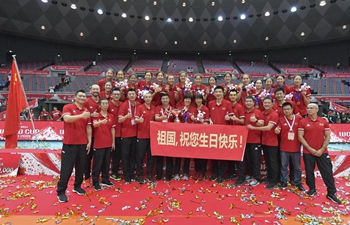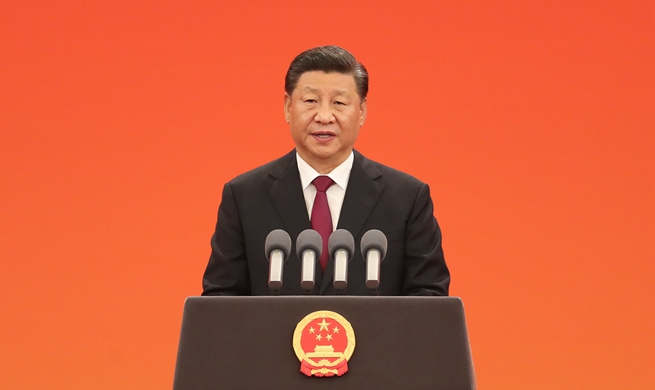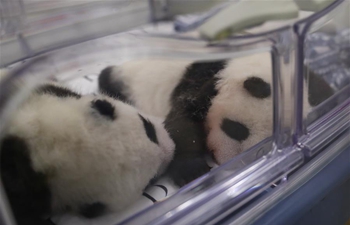WASHINGTON, Sept. 30 (Xinhua) -- A team led by Massachusetts Institute of Technology (MIT) engineers have designed 3D-printed mesh-like structures that can transform from flat layers into complex shapes in response to temperature changes.
The study published Monday in the journal Proceedings of the National Academy of Sciences shows that a flat mesh deformed into the shape of a human face, a configuration more complex than what previous shape-shifting materials can achieve.
The new design method can be used to determine the specific pattern of flat mesh structures to print, in order to make the structure transform into a desired shape, according to the study.
To make a lattice that changes into the shape of a human face, the researchers started with a 3D image of a face and created a map of the distances a flat surface would require to rise up or dip down to conform to the shape of the face.
Then, they printed the lattice from a common rubbery material which naturally expands when exposed to an increase in temperature.
Thirdly, they adjusted the material's temperature responsiveness by infusing one solution with glass fibers, making it physically stiffer and more resistant to a change in temperature.
Finally, they cured the lattice in a 250-degree-Celsius oven, took it out and placed it in a saltwater bath, where it cooled to room temperature and morphed into the shape of a human face.
The researchers also designed a mesh embedded with conductive liquid metal, which curved into a dome to form an active antenna, the resonance frequency of which changed as it morphed.
The technique can be used to design deployable structures like tents or coverings that automatically unfurl and inflate, and also be used as scaffolds for artificial tissue or deformable lenses in telescopes.
"I'd like to see this incorporated in, for example, a robotic jellyfish that changes shape to swim as we put it in water," said the paper's co-author Wim van Rees, assistant professor of mechanical engineering at MIT.













